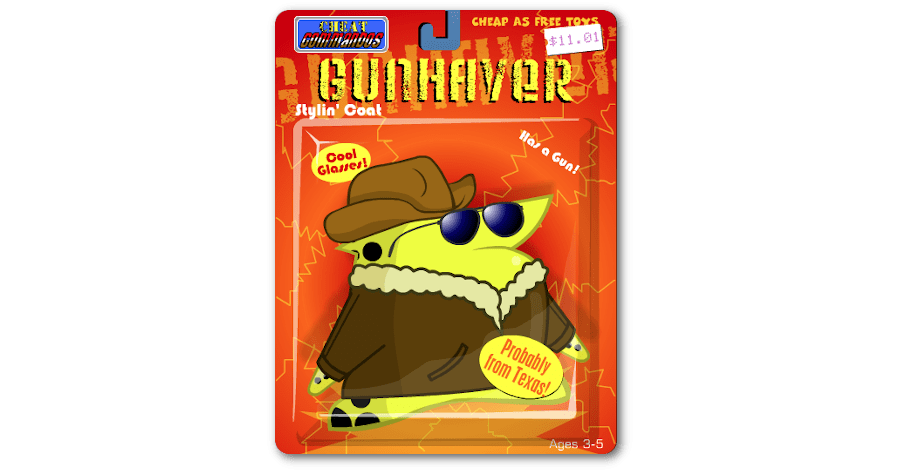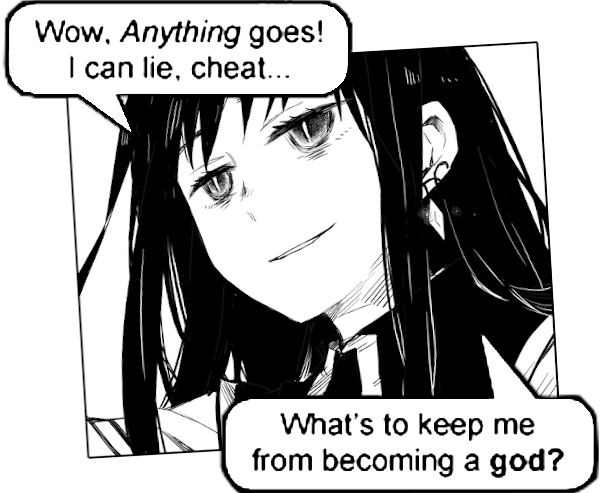April 2020 Wrapup
April 2020 continued as a strange month in this strange year. Quarantine continued – I left the house maybe five times all month, each time for grocery travel. I have seen my family only at a few arm’s reach and I’ve been doing all my work over the internet. It’s gotten to the point where I’ve stopped my phone being on silent all the time and answer it now. What a wild month.
This blog, themed around me centric media was a hard one to do but we did get there in the end, even if there were two points where posts almost didn’t go up on time – closer than I’d like to be, to be quite honest. Obviously, in a month like this, most of the articles are favourites – either topics I’d saved up for the rest of the year or burning opinions that inspired fast shots form the hip.
Still, I really liked my pieces on Bleach and the Ur-Quan. The Ur-Quan article was something of an experiment, too – I wasn’t sure if a deep dive into the lore and storytelling of a game universe like that would appeal. I’d love to do more of that if people liked it. I weirdly went in on Star Wars twice this month, with an article about how bad Sabacc is (very) and how good Ewoks are (very). I talked about my beloved helicopter boy Blades, from the Transformers universe because apparently I’ve just become a parody of my own interests.
This month you learned how to become Corvo Attano and maybe picked up some tips on teleporter bullshit in 4th edition D&D, that’s great too. I talked about how important inns are to play narrative, about how oaths and pacts are things to enoble characters, not to punish them, and I insulted everyone who complained about murder hobos. Then throw in that I did a run-down of my Eresh Protectorate knightly orders for those of you who like that kind of thing!
I also finally put out there the article about Atheist Oppression, which summarises as yes we are, and thanks to bad actors, I can’t be taken seriously talking about it.
This month’s shirt design coincidentally ties into this month’s release of Final Fantasy Seven Again.
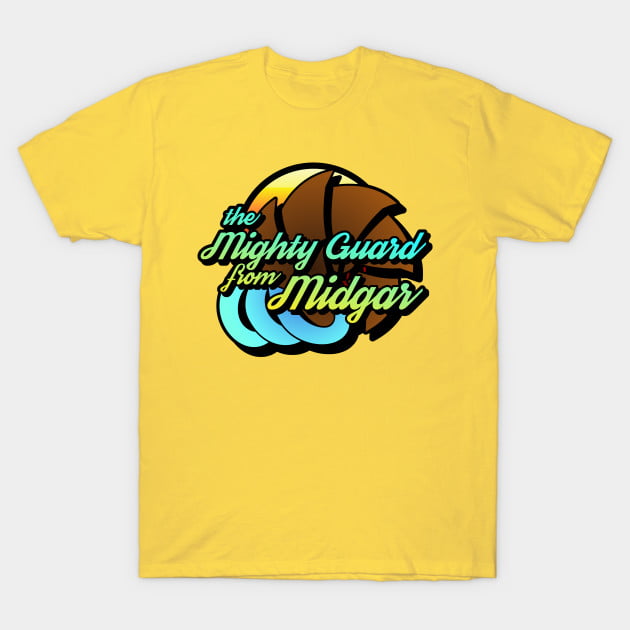
And this month’s video was, in hindsight, really easy to make! I got a good handle on how to make this kind of video over all my time practicing and I may find myself doing more stuff like this – long rundowns of character groupings. At least if you enjoyed them, please do let me know.
My personal life is just very stressful. There’s a lot of work that needs doing, there’s not a lot of boundaries between types of work and there’s a real challenge keeping the days of the week straight. I don’t want to accidentally miss the day in the week when I need to put the recycling out, for example.
Those of us who get through this are going to do it by being careful and being caring. So that’s what I’m trying.
HAS GUN
You may have seen me from time to time talk some shit about superheroes or characters in superpowered contexts whose superpower boils down to has a gun. The Punisher, for example, is a dude in a superhero universe who isn’t really a superhero – he’s just a homeless dude in a van with a lot of guns. A prepper with a mobile home. He’s the worst.
It’s not just the Punisher (who sucks), though. It’s also something I joked about when watching Kamen Rider W (which ruled), where one of the special abilities the hero could unlock was using the trigger Gaia Memory (it makes sense in context) to get a special superpower magical gun, which I would nonetheless jokingly refer to as has gun.
This particular affect, though, is something that derives from an old kids’ cartoon that I love, and have spoken about before. It’s a reference to the name Gunhaver, from the Homestar Runner cartoon (within a cartoon? The characters are shown playing with the toys and watching the show) Cheat Commandos, a parody of 80s toy-ad militarised cartoons like GI Joe.
A thing I’ve loved about Homestar Runner is the way that their jokes, often their best jokes, involve gently pointing out details that normally go unstated (“goodbye, Baloneyman, and may we all forget you probably have a really sketchy past.”) When you watch these cartoons over and over again (and I did, because it was easy to download them and they worked on poor connections), their memetic quality was valuable and you spent time seeing the jokes from lots of angles.
There’s a lot of jokes I repeat from this cartoon, whether it’s tone or a structure of delivery, or when or what to imply about myself for comic effect, including even tangents, but okay, distracted. The point here is Gunhaver. Gunhaver is The Generic Leader of the Commandos. There’s nothing to his character, not really – he just is in charge, gives useful and boring orders, and in his appearances, just serves the basic plot of the story. When you talk about these squads of diverse characters with connected abilities, like GI Joe and MASK did, the point was to individualise characters, often with clear and visually striking gimmick.
Gunhaver’s gimmick was that he had a gun.
That’s it!
This is not to say every character with a gun is a Gunhaver. After all, lots of the science machine devices you see super-dorks use are ‘guns,’ but they’re ‘guns’ they made. They’re guns that are a thing they made, and needs special skills to make. There’s also weirdo sharpshooters like Hol Horse from Many Jojo Things I Don’t Care, where the gun is just a way to express the real powers they have, or Homura from I’m Not Allowed To Make Jokes About Madoka who is a time traveller who uses guns because guns are the most obvious thing you can do when you can also time travel and you’re a twelve year old who has no reason to respect the sanctity of life.
Not so for a Gunhaver. Gunhaver characters are notable because the thing they’re wielding is just a gun. It’s a gun, which is a commercially available product in their world. Maybe the quantity of guns suggests some kind of wealth, though that’s never really what gun communicates in media. Certainly, the absolute arsenal that the Punisher (for example, again, who sucks) drives around with represents a significant fraction of a million dollars, because guns are expensive, but that’s never the important thing.
The important thing is that in a world of the fantastic, in the landscape of the infinite ways we can make metaphors out of powers, in a place where your characterisation can be expressed by your powers, the power you have is bought something a real person can buy. And do! And some of those people are the most boring and awful people around, and they make having the gun the closest thing they have to a personality.
You can make interesting characters whose powers need to be enabled by a gun. Even Black Widow, a character I waver hither and thither on, is essentially a super-spy and gunhaver, but her gunhavery is at least an interesting part of a broader skillset. Heck, just by comparison, Black Widow and Bobbi Morse are both women who stand next to each other with nearly identical skillsets, but very different personalities, and the presence or absence of a gun in their skillsets doesn’t come up.
It’s not like bad characters Has Gun, it’s just if you’re going to Has Gun, have a reason that’s interesting. Be something other than a fucking holster.
It is the most boring bastard of a power.
MTG: April Custom Commander Cards (Part One)
WOTC Employees: This article is entirely about about unsolicited game designs, with example cards.
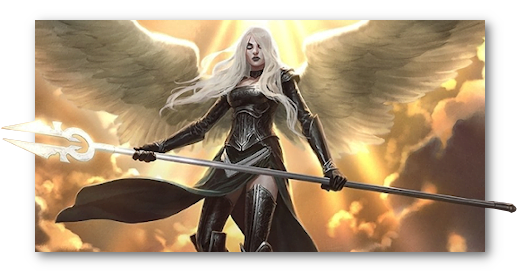
April is meant to be a month where I’m self-indulgent, and it seems one of the things I wanted to be self-indulgent about was wanting to make custom Magic: The Gathering cards to share on reddit, because what I really needed each morning was to open a post and go ‘pah, these fools don’t appreciate my genius.
Continue Reading →Story Pile: De RigeurMortis
Hey, it’s my birthday.
What’s something I can do that’s really worth it for this day? What self-aggrandising thing can I put out there that you’ll feel obligated to check out? What have I held off on sharing up until this moment…?
Imagine the sound of knuckles popping as lips draw up near a mic and a voice says, low, and slightly menacing, as Paul McDemortt prepping to launch the punchline of a truly vile joke in the livest of Doug Anthony Allstars shows, I guess that it’s time.
A content warning for this article is I’m going to use the word ‘cunt’ a few times, which I don’t normally do? Sorry!
April Shirt: Timely FF7 Reference!
One piece of content I’ve been enjoying having on in the background while I work this month, inasmuch as I ever can, is Graeme Stark doing a long play of Final Fantasy 7 – the original one. It’s great, he loves the game so it helps to temper my disdain for it. Anyway, one thing that’s been echoing in my head ever since I mis-heard it over my shoulder while he plays is the phrase on this design.
Here’s the design:
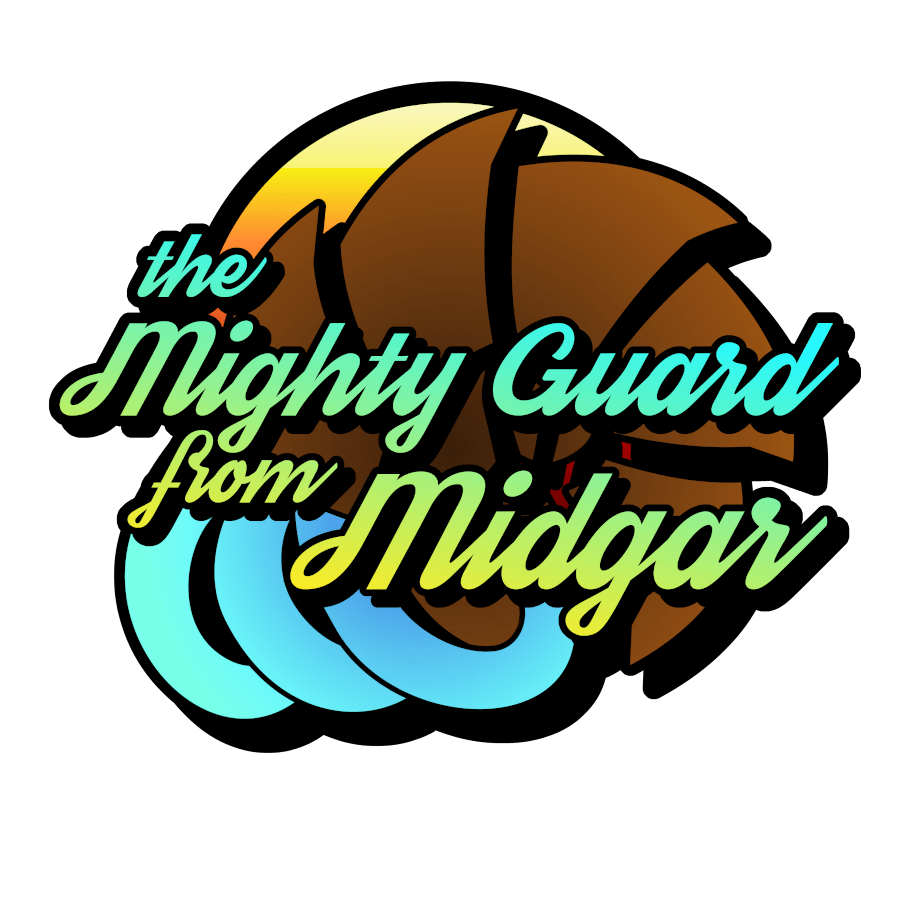
And here the design is on our friendly gormless supposedly unisex Redbubble model:
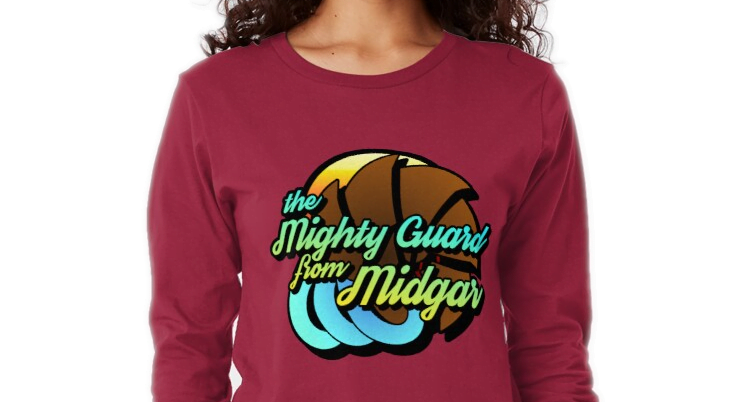
And here’s the design being modelled by the Teepublic ghost:

This design is available on a host of shirts and styles.
The Giant of Kandahar
When you talk about conspiracy theories, or false information, one of the unfortunate side effects, because of how our brain processes information, is that outlining the thing first creates the impression that it’s true, and then the disproving has to be satisfactory to that. Even if you do a perfect job debunking the introduced idea, our memories filter away in different order, and the thing more easily brought to mind seems more true. It means you have to be careful how you introduce the outlandish, for fear of leaving people with the impression of the wrong thing having a kernel of truth.
With that in mind, there’s a not insignificant number of people who believe the United States government found a giant in the invasion of Afghanistan and are covering it up.
Pause for effect.
Continue Reading →Game Pile: Ace Attorney Crash Course
Sorry this one is a little rough! I had to go reinstall all the software that makes my videos work! Still, if you’re reading this bit and not just clicking an embed link, I want to tell you thank you, and you’re wonderful.
Where the Energy Goes
This month has been hard. Last month was hard. Really this whole year has been hard and it depends really on just how long you’ve been paying attention that it’s been hard.
One of the things that’s been hard for me is writing. I don’t like giving that much up, of a sentence – I try to always stay ahead of the curve, I try to make sure that at the best of times you have no idea how much or how little I write from day to day. Well, today I’m coming off four days of not even being able to commit an idea to paper. That’s bad. Normally even if an idea doesn’t work when I start on it, I put it in a hopper and it becomes an article, later. Eventually. I can get some work done. Tiny steps are steps.
But it’s been hard to even do that.
Part of this is just presence. I’m surprised by this, but I find I write really well when I’m alone. When I’m not alone, people in the house impose their own needs on the house, which is totally reasonable, and we’re all just trying to get along right now. It makes recording audio harder, that’s an easy one. Oh, and it also means our neighbours are around more, and so are their pets, which means Elli, our pet, is more prone to causing fuss, which means that recording can be interrupted by the dog.
There’s a surprising amount of work I do when it’s quiet? waking up of a morning, putting on some relaxing audio and reading books for an hour or two, which surprises me as how much of a boring bastard I’ve become and how much I enjoy that, It’s also meant that time when I could churn out a few thousand words in a morning is now down to taking all day to write maybe half that. That’s really rough, especially as someone who prides himself on his productivity, his ability to create in any circumstances and dealing with pressures.
Also I have to be available to take opportunities. Sometimes, I get the chance to go to the store for an emergency supply when a friend is driving past our house and willing to do the pickup/dropoff for us. That means that I may have 2 hours of uninterrupted time to work, but that time is taken up, in part, by not being available to work. Just in case.
Here’s another thing, though: Everyone around me matters so much more than any piddling thing I’m writing. I started on an Ikoria set review until I realised I barely wanted to talk about four cards, because I kept getting distracted talking to a family member about things that they were interested in, things that mattered more. Every evening now I’m talking about playing board games or sharing videogames with Fox, because uh, every night now we are keenly aware of spending our time together.
This sucks, nobody is working well, and I’m just wanting to make it clear I am not immune. This is awful.
And now, saying that, I’ve been able to belt out 500 words. I’ve been able to get something done. And that’s… a start. That’s something. With that in mind, I pick myself up, and I start work on the next thing, because the next thing is what’s next.
In Praise Of ‘You Meet At An Inn’
You know, I see a lot of people complaining about the trope of starting a traditional tabletop adventure, one of your Dungeon and/or Dragonry escapades, in an inn. It’s literally now an anti-trope, where people bring up the idea of you meet at an inn as an example of how not to handle storytelling or kicking off an adventure.
Well, pish on this I say, and pish I say again! Yes, harsh language like that, terrifying and mighty, must be deployed in defense of this workhorse story beat. Presented then are five wait no it’s late so four – reasons why you should show some respect to kicking off your adventures where all the players meet in an inn.
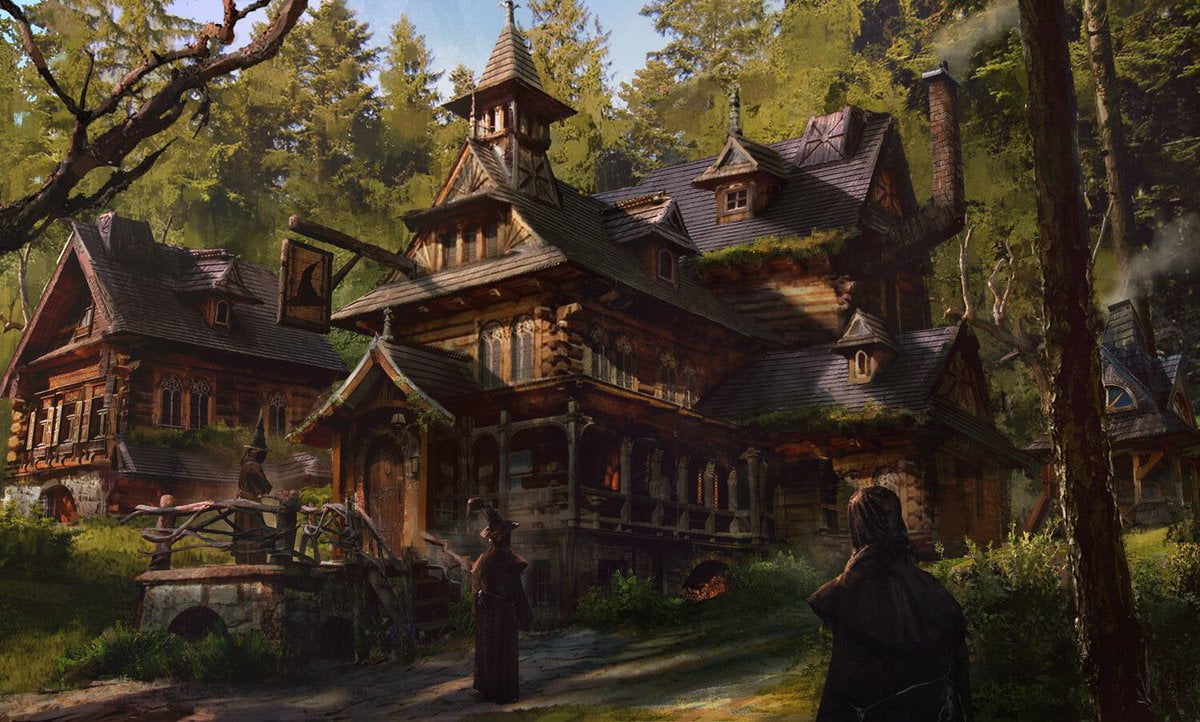
Inns Are Centralised Locations
In any given fantasy nonsense town, the inn is a place lots of people are going to go for a variety of different reasons. There are people who are there because they’re heading one way, there are people who are there because they’re heading the opposite way, there are people who are there because they’re going nowhere and have nothing better to do, there are people who are there because they want to have something that they can call fun.
Inns are therefore usually positioned to give you a big ole slice of central casting for your setting, just a slathery bit of worldbuilding. Is the inn built along a highway? is it nestled in the middle of the town, where people drift after doing something important when they arrive? Is it just outside the town, where the more distributed farmers can get to it? Is it an inn where people expect to sleep or is it just a pub with a room or two? Any given inn is going to reflect the place it’s from, so if you start in an inn, you can go bam and give players a solid see of the place they’re at.
Inns Are Transitional Spaces
And in this way, all D&D games say #TransRights, but also the transitional nature of an inn means that any given person who’s there has a reason to have a story. If you throw the party there without any on-ramping (which we’ll get to later), the fact that they’re at an inn asks a question, of why are you here. It’s like if you find someone at an airport, that’s not a space a person just goes to hang about, there’s a ticket that says from and to in their pocket, so you have to have a reason to have that ticket, and now you have the start of a story.
You could be coming to an inn to find someone who’s already there. You could be at the inn because you just arrived in town and need things explained. You could be at the inn because you are about to beat cheeks out of town and need to stop for a last meal before you hit the road. You could be looking for work from people in those two situations. Think of an inn as a chance to show what you’re about, and players will use the common space of an inn properly. Hide in a corner, look for someone in particular, bother a type of class of people there like merchants or bards, eat, or drink or check for work, it’s just a good, solid gathering space for a lot of options.
Inns Give You Waiters
A common moral test of a person is how they treat someone over whom they have power who is obligated to be nice to them. In an inn, you have service staff, and that gives you a fast track way to demonstrate the kind of person your character is. You show character in what you do, so if you have an NPC in the group or someone you want them to know about, you can show them being kind to the waiter, or reasonable, or unreasonable, or even just agitated and then apologising. The fact that there’s a common person that everyone in the room has a reason to pay attention to is super useful.
Plus, I just find it’s a very easy way to demonstrate that say, someone who may later in the adventure wind up being a dithery dimbulb wizard who annoys players or a shouty angry politico who demands excellence, all that stuff can be neatly contrasted with the reminder that this person respects the waiter.
And finally:
How To Be: Corvo Attano (In 4E D&D)
In How To Be we’re going to look at a variety of characters from Not D&D and conceptualise how you might go about making a version of that character in the form of D&D that matters on this blog, D&D 4th Edition. Our guidelines are as follows:
- This is going to be a brief rundown of ways to make a character that ‘feels’ like the source character
- This isn’t meant to be comprehensive or authoritative but as a creative exercise
- While not every character can work immediately out of the box, the aim is to make sure they have a character ‘feel’ as soon as possible
- The character has to have the ‘feeling’ of the character by at least midway through Heroic
When building characters in 4th Edition it’s worth remembering that there are a lot of different ways to do the same basic thing. This isn’t going to be comprehensive, or even particularly fleshed out, and instead give you some places to start when you want to make something.
Another thing to remember is that 4e characters tend to be more about collected interactions of groups of things – it’s not that you get a build with specific rules about what you have to take, and when, and why, like you’re lockpicking your way through a design in the hopes of getting an overlap eventually. Character building is about packages, not programs, and we’ll talk about some packages and reference them going forwards.
This time, we’re going to try and capture the feeling of the Knight Protector of the Empress of Dunwall woops oh no it’s all gone wrong, Corvo Attano.
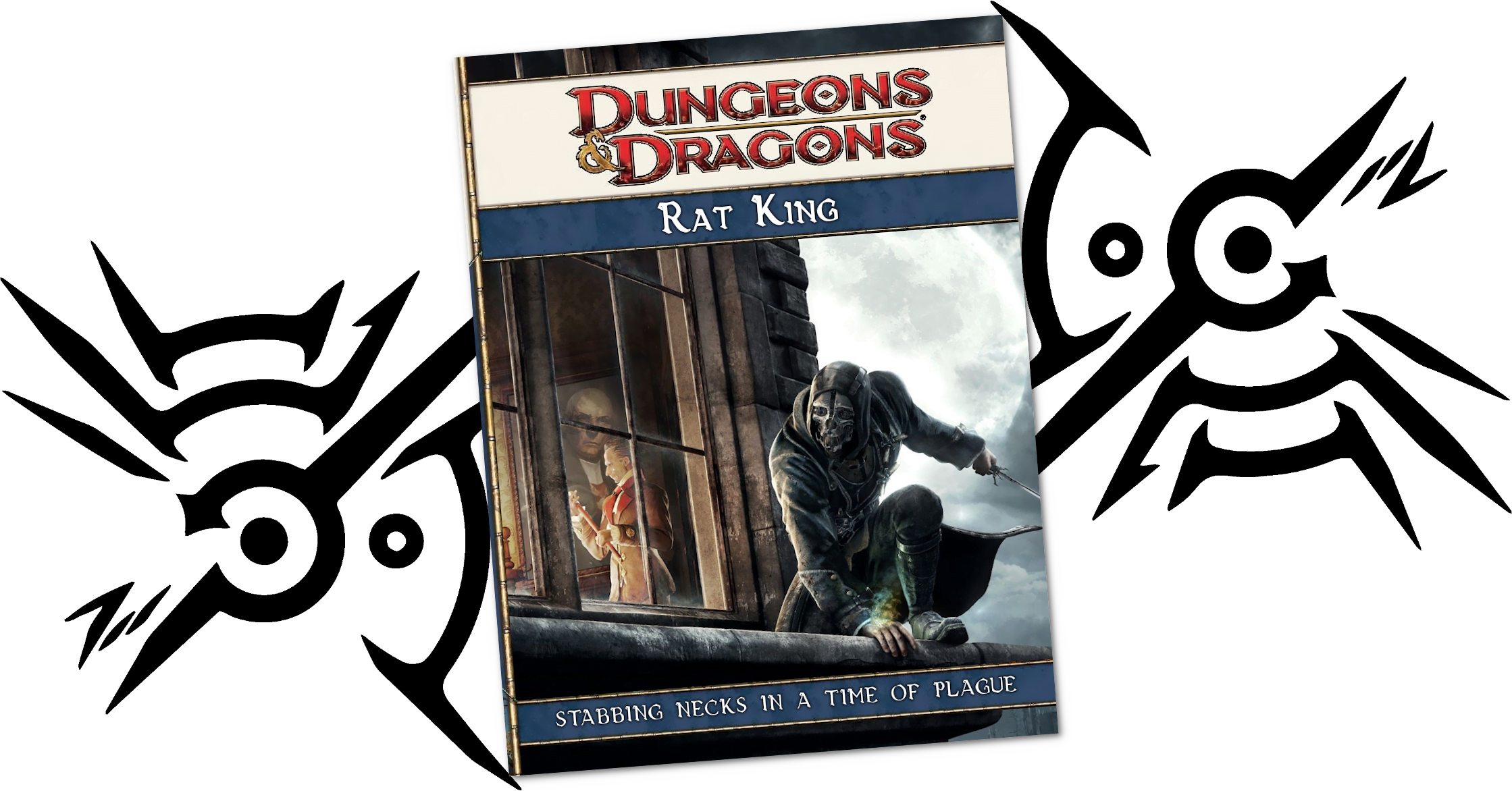
Story Pile: Durarara!!
One thing I promised myself when I started this document is that I’d write about this series. After all, I love Baccano so much, it shouldn’t be that hard to just continue that same thread of language, right? Those words are the ones I put down in 2018, after I finished putting the first draft of my Baccano document together, thinking it would be swift and simple to follow up with words about Durarara!!
Silly me.
Small Oppressions
Hey it’s April and that means I’m giving myself carte blanche to talk about shit that isn’t super important but that matters to me because I really need to be focusing on something right now, and this is an infamously problematic topic, so hey, let’s talk about the marginalisation of atheism.
Continue Reading →Binging Bad
Oh hey, Star Trek, a thing that two years ago I generally regarded as ‘just some nerd show I have no interest in’ that I’ve now realised I have enough of a familiarity with to be able to meaningfully research and have opinions on, that’s wild. It seems that every few months, usually when something leaves me to my own devices while work demands a lot of attention on grinding information like a research paper or marking, I will wind up using my second monitor to cannonball a television series, which has sometimes been an entire Star Trek and has sometimes been Longmire, and the show doesn’t have to be good as much as it has to be not intolerable. I suppose that sounds like an indictment of Star Trek but really it’s worth knowing that at its worst, it was never as bad as Longmire, so there’s something to be proud of, able to consistently stand above an absolutely shit series that leads with a Katie Sackhoff poledance.
The series of this season was Deep Space Nine, which I watched over the course of a few months, as my picture-in-picture soundscape filler, and I celebrated this watch by turning as many episodes as I could find one into a funny image macro that you could decipher with the context of me, as a person, informing the episode of Deep Space Nine assuming you’d already seen it, creating the impression of yourself and myself as an ingroup that shared that common experience, aka ‘memes.’
One thing that the binge generation has done for a lot of television programs is that there’s a surprising number of episodic TV shows where it was easy to lose track of the sequence of episodes unless you were a hardcore nerd with a DVD stacker, and therefore get weird impressions of how ‘close together’ some things were. There’s a sort of phantom memory that can crop up with long-running shows, like how in M*A*S*H some people may forget there ever was a character called Spearchucker.
When you view a large text with its own episodes as context, when performances that were normally week to week are instead side by side, you can get some really interesting, weird, phantom effects. If you watch all of The Simpsons in one string of episodes, the recurrent themes become obvious and the series stops being about a series going back, seven years or so later, to re-do stories with new information and instead becomes about showing an endless, toiling, unstopping cycle of awfulness, and strangely, becomes a series about how the author (in the Barthes sense) kind of hates Lisa. She’s always being shown told some hopeful story of ‘tomorrow will be better’ only for the status quo to reset hard and the next time she’s focal, it’s the same basic problem.
Deep Space 9 is not a series that benefits from being watched all in a rush, and it absolutely does not benefit from having its beloved multi-part sequences of episodes (a couple of 6 parters and one nine parter finale) treated as single, long, cannonballed experiences from someone with a notepad in hand.
Similarly, I watched all of Breaking Bad in a few days once I had a service that offered it, and when you do that, the series becomes fascinatingly blatant. If you watch it this way it seems extremely hard to me to ever see the good in Walter – there’s no break or pause in his behaviour, no time to speculate, because you know it’s coming, you know it’s right there. Breaking Bad was a media event, and it was a big deal that each week, people would gather and talk about where they imagined the story was going, or what something about the story meant. This was a big enough deal that when Breaking Bad was airing, there was a channel package advertising itself as having the show on ‘at the same time as America’ meaning you could deal with the internet without worrying about spoilers. The shared cultural moment of suspending each episode for a week and then taking time to process it changes the character of the show.
Essentially, most of the people who watched Breaking Bad made some Breaking Bad fanfiction in their head, and we just don’t talk about it, because that’s something those other nerds get involved in. Not every single white person over the age of twenty two.
I feel like this is an important piece of context to give for later, when I decide to talk about Deep Space Nine in its actuality… because boy, that series has some weird stuff in it when you view it all at once.
Game Pile: System Shock
System Shock is a 1994 first-person action adventure roleplaying shooter game with dialogue puzzles and a hacking minigame that pretty much stands as one of the many points we can say the Immersive Sim as a genre was born. In this game, you get one of the coldest opens you can get – you awake in a cryogenic chamber with your memory in tatters, in a strangely quiet space station, looking for weapons, medication, cybernetic upgrades and mind-altering drugs that you need to piece together what happened, what’s going on, and whether or not you’re going to get out of here alive.
The Church Knights of the Eresh Protectorates
Once again I’m returning to run games in my Cobrin’Seil D&D setting. It’s just a setting, there’s no high romance to it, I don’t have an elevator pitch to it that’ll let you go ‘oh yeah, dang, I want to be here.’ It’s just a place with a bunch of stuff I like in it, monsters for friends to fight, Trade Cartels to attack, bandits to retaliate against, at least one or two churches to have corrupt villains come out of, all that stuff.
In this setting, though, there are Church Knights, and I’ve found more than anything else in a tabletop game book, I get excited about factions. Factions are something that you can belong to, an organisation with a perspective and an idea to them, and it can come with competing needs and ways to shape yourself in response to an identity.
So I’m going to share a bit of my setting. I’m going to share with you the Church Knights of the Eresh Protectorates.
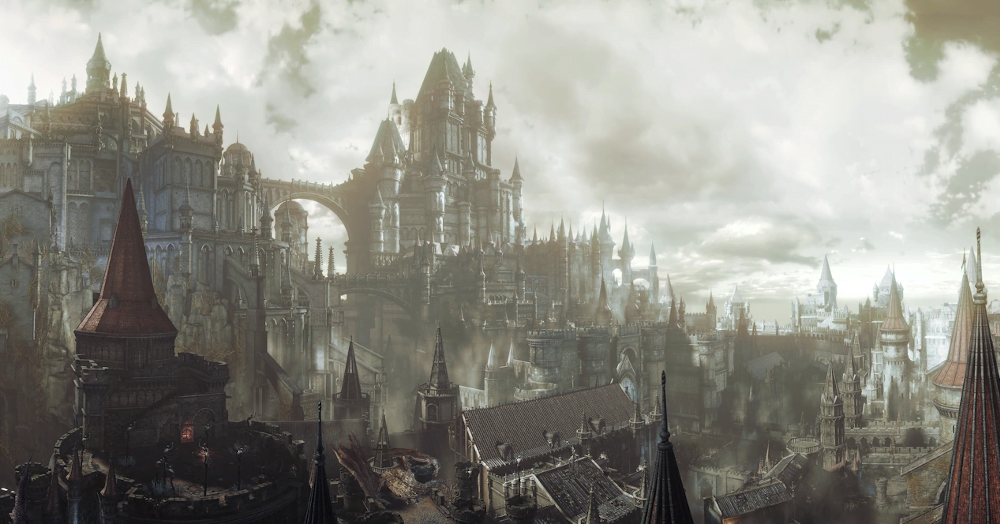
The I in We
Iiii love symbiotic characters.
I don’t mean oh, I love how these two characters relate to one another, it’s like they’re in sync but not in a gay way or in a definitely gay way. I don’t mean characters like Sora and Riku where the individuals kinda have nothing going on but if you look at them as a pair you can use one to extrapolate that the other one, you know, exists.
Oh, but dunks on the character design of Kingdom Hearts aside, what I mean is that I have a fondness for characters who are in some way symbiotic between two identities. This isn’t just superhero stuff – though that absolutely lives in this real estate – but rather characters who can be seen as having either multiple identities in one body, or one identity across multiple bodies.
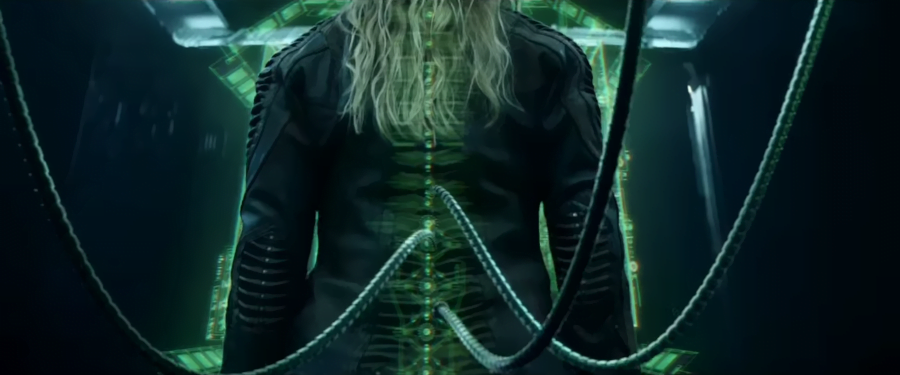
What prompted me to think about this was of all things a scene in Episode 8 of Picard, which, I am really hoping by the time this has come out, has resolved and we’re all going ‘what a jolly good Star Trek that was’ and the end of the narrative wasn’t something about, I dunno, how marshmallows are evil. In the scene in question, 7/Annika/Whatever you want to call her, in a desperate move, plugs herself back into the Borg cube, and consciously chooses to create a new collective for a few minutes.
Then when she’s done, she says Annika still has things to do.
When I was a kid, I was always fascinated by gestalt transformers, where there was one transformer that wasn’t five transformers hanging around, but was literally an individual, with its own personality, and it could break apart. Maybe it was because I was a lonely kid, always looking for people who had something in common with me, or maybe it was just because big toy cool, I always found something fascinating about nesting characters.
I wonder if maybe this is why I think that Venom is so tiresome. I find the idea of a character containing some kind of monstrous identity really interesting, and Venom just does it all in a very tiresome way, like it’s dumping plain pasta on a plate with a splat and going there. that. It’s not like my own experience writing this kind of character, where the way the two identities perceive one another and themselves plays into what they’re even for, in the story. It’s not like how I write the wolf of Rock City.
But it isn’t just a single direction, too. Swarm druids and vampiric discorporation are both really exciting, interesting ideas to me where you suddenly have one mind splitting out over a huge number of parts and still maintaining itself. How do you regard yourself when you’re a set of drones? How much of you can pull apart and still be you? What about a swarm-spawning character, a creature like the Swarm Hosts from Starcraft?
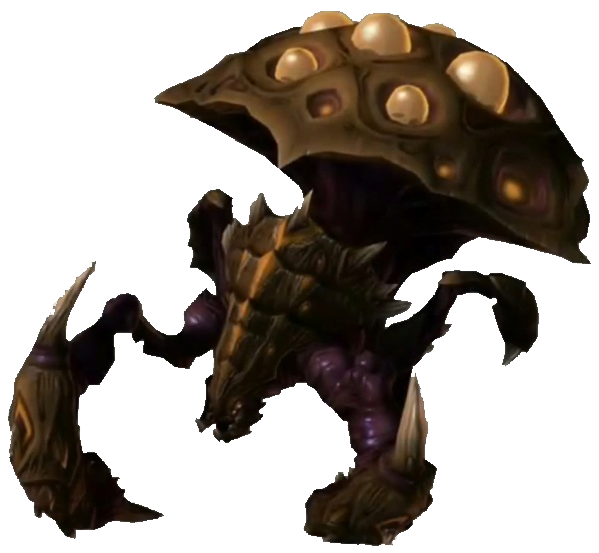
Back in Diablo 2 there were druids, druids that could summon clouds of vines and bugs and dogs and worse around them while they ran around hitting things (often with their very animal claws). That same feeling, that cloud of being who I was always appealed to me, and when I started playing around in RPG sourcebooks, it wasn’t long before I found all the interesting ways characters could extend their selves. In BESM you could make sentient weapons and tools, and then link them to your identity (so you didn’t have to track two sets of HP). Because BESM was broken as biscuits, this was also appealing to my power gamer elements, so that obviously pulled me along that route.
Part of it is internal dialogue. A character who is in conflict with themselves is common, but when you can metaphorise that, and show elements of who or what is in charge of the body at any given point in time, you get to show dimensions of where the personalities overlap or disagree. Part of it is I think that being a lonely kid makes you imagine weird friendships.
And I guess another part of it is that you can use it to show ways that people think about themselves… and ways they can be wrong.
Anyway, symbiotic characters! They’re cool! Toxin, Upgrade, Defensor, Kord and Fortress Maximus, the idea of the werewolf itself, the Trill, and 7 of 9 (not that I’ve seen Voyager yet)! These are cool and I like ’em!
Weird since one of my most hated villain groups of all time has been the Yeerks tho’.
Sabacc Sucks
I’ve been watching a lot of Deep Space 9 lately, and central to that is the location of Quark’s, a bar and gambling den, written by people who clearly haven’t the faintest fucking clue how to play any kind of gambling game. There are two games shown in this place, Tongo and Dabo, which are Stupid Poker and Stupid Roulette respectively.
Now, while I would love to tear into Deep Space 9 for its terrible depiction of game on the stage, we have one Edo Baraf to thank for getting my attention back onto one of the worst games designed by one of the largest and most successful multimedia empires in history:
Sabacc.
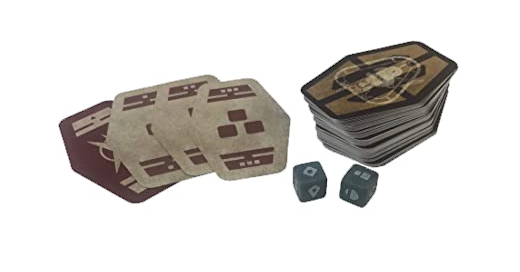
Story Pile: NEXTWAVE!
In case you were wondering, yeah this article was written before Warren Ellis was known for being a creepy sex pest.
April has been a difficult month to write for, not the least of which because, uh, global pandemic, but also because one of the details about April is it’s a time to write about things I want to write about, the subjects I’ve saved to talk about because they’re personal.
For the non-Pile articles, this has been decidedly easy, with lots of indulgent sniping at other people’s misinformed or inadequately excellent opinions, but for the media piles it has proven difficult because I feel I’ve already addressed some of my favourites and most culturally important experiences and at least right now, in this time of malaise, I find it hard to remember things I consider deep and personal favourites, favourites about which I can say fun or interesting things.

I’ve written about the Quest for Glory games, I’ve written about the Baldur’s Gate games, Doom and Baccano and other games that feel somewhat iconic to myself, and I find myself wondering what more I can even say, what has been worth holding up. John Wick? Tons of people have talked about how great that movie is, what more am I going to bring to bear on the conversation except as someone who has been in some creepily controlled situations with violence as the only out? Nothing useful. Nothing relatable.
Instead, then, I’m going to take an easy route. I’m going to talk about a comic book I love. I’m going to talk about Nextwave, a 2006-2007 limited run comic book that was written to live outside the main continuity of Marvel comics… and we’re going to start with a content warning.
Continue Reading →Worldbuilding Songs
Perhaps it’s because I love and appreciate implied storytelling following a childhood of reading probably the worst bestselling book in history that, while supposedly full of crucial information that’ll keep you from being infinitely tortured forever, is nonetheless so fantastically obscure that the vital tenent of the trinity that makes it a monotheistic text and not just another fantasy novel of fake bullshit isn’t even in there and you have to kind of guess around the edges and read the supplemental materials to get what the fuck it even means that means alternate history narratives are oftentimes wonderfully interesting to me. The problem with them, and we’re not going to talk about how long that sentence was, Dad, is that alternate histories are also extraordinarily boring works, usually penned by extremely thudding individuals and strangely, tend to attract audiences that are pretty, well, let’s just say it’s not that these communities are overwhelmingly racist, it’s just that they clearly haven’t done enough to make sure racists feel uncomfortable enough to fuck off.
But what if instead of churning through a civil war era novel that wanted to explain in detail how it went about handling the difference in Ironclad technology, there was some kind of short, fun, punchy way to get alt history, in increments of say, five minutes or less? Well, they’d have to be really good, because then you’re talking about worldbuilding for a real world history in a tiny amount of time. Maybe you’d need something to string it all together, like, you know, music and rhythm and wordplay and all that.
Continue Reading →MTG: Mel Candy
I’ve spoken in the past about Magic The Gathering‘s player psychographics, characterisations that the game developers use to describe and discuss the types of players that engage with their game. These archetypes are Tammy, Jenny and Spike, and they also kinda line up with other, similar efforts to categorise gameplay choices from the work of Roger Caillois, immense racist and clown-hater.
In the conversation about player psychographics, one Matt Cavotta introduced the idea of the Vorthos, a type of player who cared about and engaged with the game because of its lore, someone for whom the fiction of the play took paramount presence. In Magic’s case, it kind of needed this distinction because there’s a whole collection of people who engage with the game for reasons that treat the game as a secondary element of the game.
And then, with Vorthos, there was one more name that Mark Rosewater introduced, bringing their player nicknames up to five: Mel.
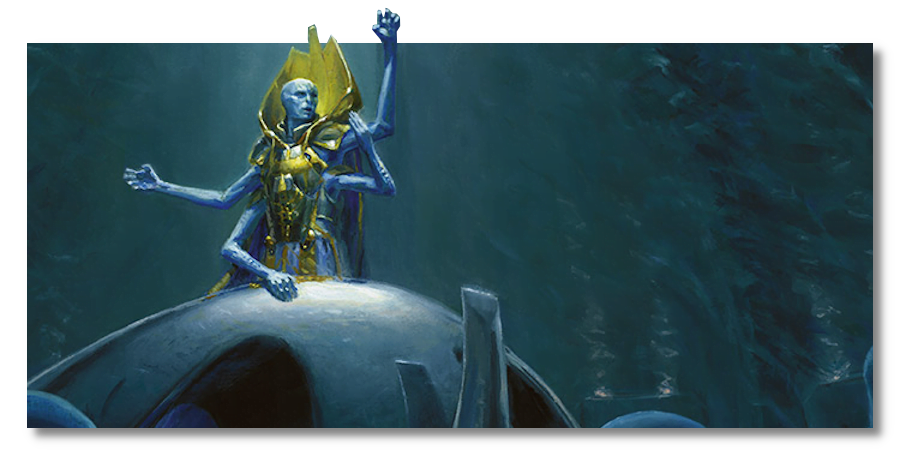
Game Pile: The Ur-Quan Heresies
Surely I’ve done this already.
Surely.
Digging back through my history on this blog, I’m stunned to find that I never did an article espousing the classic MS-DOS era space exploration game, Star Control 2. In fact, if you go back looking for it, the closest you get to me commenting on it is that I once said Mass Effect 2 is a worthy second Star Control 2, a point that doesn’t feel like hyperbole in hindsight. It only took eighteen years for them to catch up.
Star Control 2 was a 1992 PC Game, which was released on a handful of platforms, including the 3D0. In the past few years, it’s been subject to a mess of copyright nonsense, and I’m mostly disinterested in talking about that, except to mention that Stardock is a bad company run by a raging asshole who a reasonable industry would have driven out.
Anyway.
Star Control 2 is a game that’s hard for me to talk about because it is both so old that it’s really quite annoying to play and yet so important you’ve played thousands of games that do all the game and infrastructure bits better. Star Control 2 is a game from 1992 that might as well have been an MMO for the scope of its lore and its attempted breadth of interactions; you explore, you map planets, you collect information, you do space battles, you manage resources, you connect story tidbits between people, you negotiate treaties and you can even manage multiple routes towards races collaborating on the way to the end of the game, which is about destroying an important military resources of an empire that would otherwise be the doom of all freedom in the galaxy.
It is a lot and it was distributed on two 3.5 inch floppies.
I never got to the end of this game as a kid because the game was really quite vast. You can make mistakes in the game that mean some tasks take ages, and you need to sometimes compensate for weaknesses in one area with strengths in another – like being really good at ship-to-ship combat to make up for being terrible at fuel management (damn Slylandro probes).
I don’t really want to talk to you about Star Control 2, the game though. You can go download the Ur-Quan Masters and play the game for yourself. Instead I want to talk to you about specific lore from this game universe, to talk about one of the things that this game world is about.
I want to talk to you about the Ur-Quan.
Continue Reading →3.5 Memories: Replacement Levels
Ever heard of this?
This mechanic, introduced in one of the Races Of books in 3.5, presented the idea that while the class structure worked in general for most of the game, there were more specific versions of classes for races that had a particular, peculiar affinity for that class. This meant that while halfling fighters and gnome fighters and dwarf fighters were generally all the same, a half-orc fighter might be different because of the way half-orcs did the job of ‘fighter.’
Continue Reading →Oaths, Pacts and The Moral Failure of Trying
A lot of D&D players view their D&D world like they’re a bunch of cowards.
Continue Reading →Ewoks
It’s hard to be a Star Wars fan.
Star Wars is like any long-reaching cultural phenomenon of its ilk, mostly just like anything else that’s widely recognised, memetically important, ideologically contagious and loved by an enormous fanbase. It’s not – and I do not say this to make light – unlike a religion. It has shibboleths and practices, varying degrees of expression, rituals and totems, it has a sort of generalised spine of its own cultural values, and it has some fans who are into it who are just the woooorst.
At this point, I have watched nine of eleven Star War movies I’m aware of – I’m missing Rogue One and Rise of Skywalker. Of those nine movies, most are meaninglessly silly kid’s fare that we treat as more important than I feel they deserve, Solo is the worst kind of self-gladhanding we get too much of in fandom communitie, sabacc sucks so much, I actively liked The Last Jedi, and I loved about… half an hour of Return of the Jedi.
The half hour that’s all about Ewoks.
Continue Reading →Story Pile: Bleach (The Series)
Talk about a mile-wide pie.
Finding Needle (Games) In A Haystack (Which Is Society)
It can be hard to talk about a trend in games without it being seen as talking about all games that represent that trend. Especially in this case when the game that started me thinking about the conversation is a game that’s not just an indie darling, but it’s an indie darling which has a lot of queer and neuroatypical cred. There are lots of people who really care about the game that started me thinking about it, and unlike other Indie Darlings that Talen Doesn’t Like, I don’t actually dislike this game!
But it is where the thought started, and in the interest of honestly addressing the idea, let’s go on discussing an idea brought to my attention by cultural phenomenon, accessibility example, and Filthy SJW Propoganda needle game Celeste.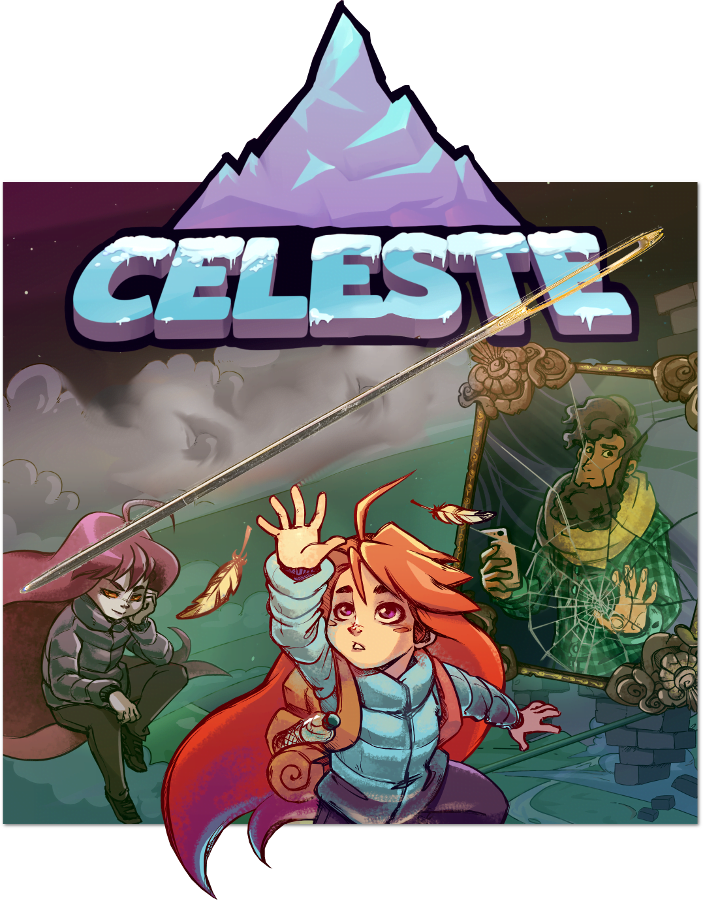
Let’s first define a ‘needle game.’ Needle games are a particular variety of usually platform game with a fantastically difficult path through the game, usually in a room-by-room basis, most commonly associated with the game I Wanna Be The Guy. There are a lot of indie games in this genre, they’re pretty popular, and if IWBTG was the dawn of the current framework for these deliberately-very-difficult videogames, then they were kind of ‘perfected’ in Celeste.
Needle games have a bunch of common traits, but a basic idea is that each room usually has a single navigable path through it, that path is usually non-obvious until you’ve played your way through the game a lot, rooms are usually made to look impossible, but to have an idea of how you start. A lot of these games are built around the idea that you will fail over and over again until you correctly execute and pass through the room.
Note that Hotline Miami is not a needle game, because a big part of that game is deliberate randomness. In needle games, the rooms are almost always completely identical from one attempt to another. The point of these games, generally speaking, is to get as close as is possible to actually perfectly executing on the way the game is meant to be played.
Needle games are quitely very different to most other forms of videogames, just because they reduce the degree to which play can be playful.
There’s this phrase I use a lot when discussing ‘play’ that’s from Roger Caillois, renowned racist and clown-hater, where he describes play as being a meaningful idea that is expressed in the play of an actor or the play of a gear. One of those two agents can be extremely free, can execute on its intention individually, and indeed, often cannot execute on its intention in the same way twice. Even the most practiced actor has faint variance from performance to performance, the way the hair settles on your arms all being possibly different. The other is incapable of executing its intention in any ways it was not predetermined to do.
Needle games are games that are overwhelmingly games about the play of a gear.
There’s a criticism of the Narrative Adventure game where they’re basically about finding a variety of keys to use on a variety of doors, and just finding the right sequence of items that slot into their holes like a kid’s toy where blocks go through holes. The thing is, that’s what a needle game is, too, a type of game where if you are not here to try to do the thing a dozen times and do it perfectly, how much are you aware of what the game really is? How genuine are your feelings, how serious is your triumph? What if you don’t like the kind of game it is, even if it has accessibility options that would let you finish it? What if it can’t hold your attention because you find the kind of game it’s being boring?
Is it still play? Well, yeah, you’re not being required to do it. But it does mean that in this space, this game, by its genre is going to be alienating to a lot of people, who simply do not or can’t respond to the way this game wants to be played. The way the game wants to entangle you in its rules.
And the reason Celeste makes me think of this is because this is a game that comes up in conversations as a metaphor for queerness, plurality, and depression, and as an example of a game having accessibility, and it’s also a game that because of how it is, a large number of people who may indeed want to be part of that conversation, won’t ever really be able to connect with it.
This isn’t a problem per se, but it is an example of how our limited attention for indie games, especially games about or for the marginalised kind of poisons and limits our ability to talk about these things. That as long as we keep our conversation about these games limited to a small number of titles as our reference pool, we’re going to be making our conversations about these ideas in games expressed by people who like the kind of games that we choose to elevate. It’s why we have Borderlands 3 as an example of a GLAAD game of the year.
And that sucks.
Because games are a great way to play with ideas.
Blades (The Transformer, not The Vampire Movies)
Talking about Transformers continuity is fraught because to say there’s a ‘canon’ or a ‘character’ is nonsense. Thanks to the neverending maw of capitalism and a loose vision of what matters to the people who engage with a brand that very much just started to sell toys thirty years ago, it’s not like there’s any kind of sensible core to anything. Talking about character and continuity of a story that isn’t just interrupted by commercial breaks but is basically constructed out of those commercial breaks is a fool’s errand. Anything I have to say about a Transformers character is going to be either contained within a specific bubble of continuity (like Animated), or sort of formed out of a general collusion of shadows shining on many similar objects, to see where they overlap.
With that in mind, have I told you about Blades?
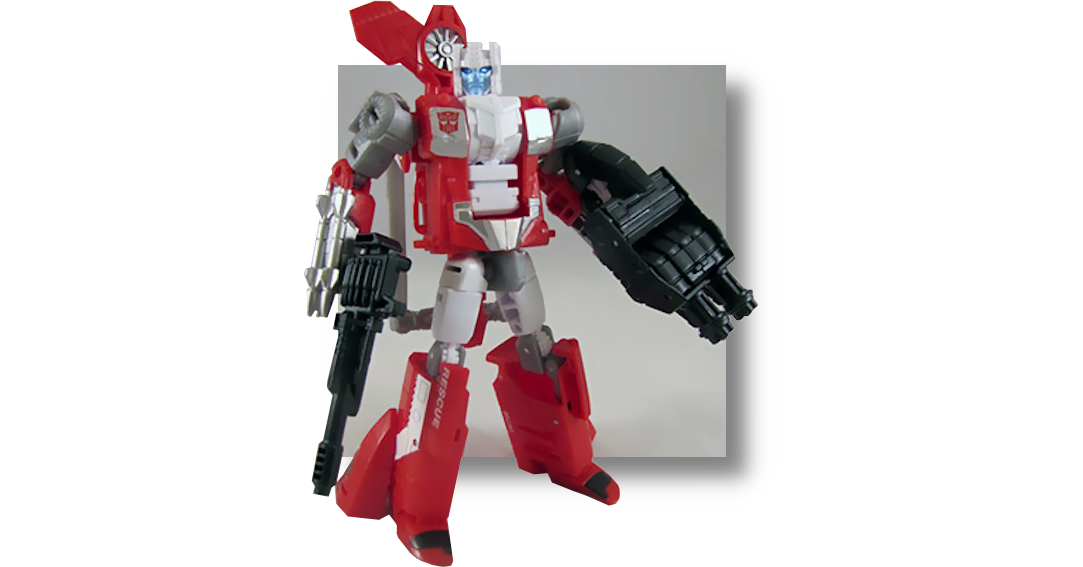
Game Pile: Traffic Department 2192
You used to get a lot of game for nothing.
I think it’s hard to convey to people just how fantastically ridiculous the CD-Rom was to PC gaming when it first occured – games that were originally designed to be distributed in increments of four to six were suddenly being given over to increments of six hundred. Doom, in its original incarnation, lived on six floppy disks, and could be transported in the amount of data it takes to load the webpage of a single tweet. There were two ecosystems of technology at the time, and it wasn’t as simple as ‘more space means more big games.’
For a few years there, games were being made to try and exist in both technological spaces: the disk distributions, and the CD Rom distributions, with bulletin boards and early internet being more geared towards the former than the latter. You’d see illegal download websites proudly touting that they had ‘stripped’ versions of CD rom games, with all the audio and video removed, making the ‘game’ that remained something like twenty megabytes.
In the early days of the CD Rom, then, there were companies that – a little unscrupulously, really – collecting as many shareware or widely distributed titles as they possibly could, compiling them into 600 meg collections of games originally designed to fill 1 or 2 megabytes, sometimes with nothing but a text menu to show you hundreds of completely indistinguishable games from one another, and sell them to you. You could spend $15 and get a CD of shareware that, really, was ostensibly free to copy from someone, but then you’d have to find it.
That was part of the trick when it came to shareware CDs. They gave you a few hundred things to ‘play,’ but be honest, if it was on the third page of possible directories when you typed ‘dir /p’ then you probably weren’t going to go looking in that directory. They were garbage, the AOL Free Trial CD of the PC gamer set, with everyone having one or two of them and the task of looking through them being genuinely difficult.
Sometimes a bloodstained demon asks me why I seem to know all the DOS shareware garbage from this period, and I tell her, please, sheathe your blade when you ask questions like that, but also it’s because I had the free time as a church boy. That’s how I found all these shareware games, these free games, and the rare gem of a whole game that was somehow just being randomly pirated. Crystal Caves. Sam the Secret Agent.
One of those games – one of the good ones – was Traffic Department 2192, a project who had a 12 year old working as a composer and which presented as its shareware ‘chapter’ a range of about twenty levels and thousands upon thousands of words.
I learned from the best.
Continue Reading →Murder Hobos Are A You Problem
Alright you dorks, sit down and shut up.
Continue Reading →Talen Month 2020
You know sometimes I need a good solid month to just set aside the more diplomatic versions of these opinions and let it all out in one long, extremely focused, extremely sincere complaint. Last year I dedicated the month of April to talking sincerely and wholeheartedly about works I had strong feelings about, personally, things that I thought could be useful for learning something about me, as a person, and as a result I wrote some of my favourite articles of the whole year.
It’s good, and I think it’s a good way to sequester media into specific spaces. Maybe this will be the month where I talk long-form about some things I’m assumed to love that I don’t. Maybe I’ll try and convince you of the value of stuff I liked but which doesn’t hold up. Maybe I’ll just argue with a stranger who thinks Scalding Tarns are essential for new players to get into Magic: The Gathering.
The important thing is, this is going to be a month where the primary drive on whether or not I talk about a topic is because it would otherwise centre me too much. There are plenty of times I’ve talked about work that made me feel bad, and generally left my feelings out of it, trying to focus instead on the best details about it, or present the work knowing people who cared about it a great deal.
This is also a time when you might learn something about stuff I really like, the stuff that might help you understand me. I’ve been told these past few years all sorts of truly amazing things by people who I thought knew me really well, about what they assumed I liked or didn’t like, and it made me realise that I’ve been remiss in sharing elements of myself with people who are literally my friends.
So.
Expect a bit of fighty, expect a bit of fanboying, and expect me to maybe finally shout about why I don’t think a Recent Darling Of The Space I’m In is in fact, good!
Should be fun!
